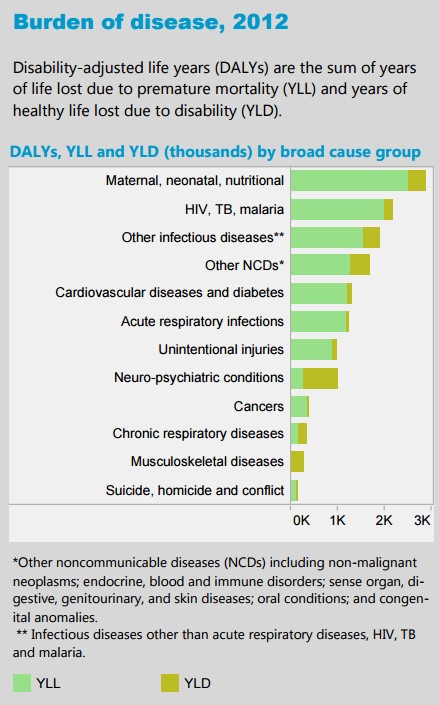Home > African Marke > Ghana
Time: Jun 17, 2016
Disease Spectrum & Demand Gap
Disease Spectrum & Demand Gap

Source: Ghana: WHO Statistical Profile, WHO, 2012. http://www.who.int/gho/countries/gha.pdf?ua=1
Most patients suffered from communicable diseases and diseases related to poor hygiene and sanitation. But in the wake of increasing wealth, other disease patterns emerge. Non-communicable diseases such as hypertension, cardiovascular diseases, diabetes, cancer, road traffic accident and obesity are, among others, now becoming frequent occurrences in hospitals and clinics[1].
1) Maternal mortality was declared a national emergency in 2008, with a rate of 451 deaths per 100,000 live births, last measured in 2006. Fewer than 60% of all women have a skilled provider at birth, a statistic significantly worse for women in rural areas and those in the poorest quintile of the population. More than 100,000 children under five die each year, accounting for more than half of all deaths in Ghana.
2) The entire population is at risk of malaria, the major cause of morbidity in Ghana, accounting for about 38% of all hospital admissions, and 33% of all deaths in children under five. Presence of the malaria parasite in the blood (parasitemia), measured to be as high as 60% in the northern regions during the rainy season, is also directly linked with disastrously high levels of anemia. More than 78% of all children under five, and almost 60% of all pregnant women, are anemic, a factor that confounds development in all sectors.
3) HIV prevalence is now estimated at 1.5 percent in the general population, down from the peak of 2.4% in 1998. In contrast to the decline in the general population, prevalence is still 10 to 20 times higher in at-risk population, with HIV incidence among ambulant sex workers apparently on the rise[2].
[1] Sector Report Health and Life Sciences Ghana, p.7.
[2] USAID/Ghana Country Development Cooperation Strategy 2013–2017, USAID, December 2012, p.34.

